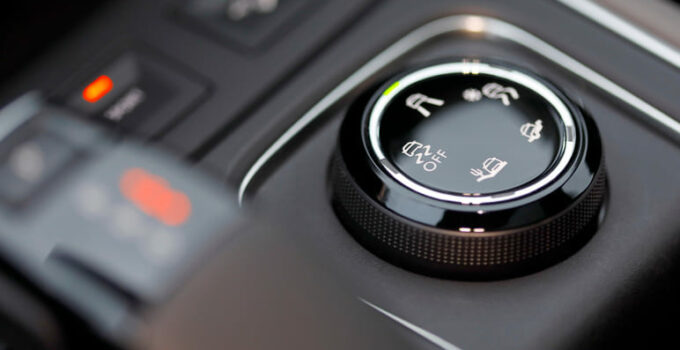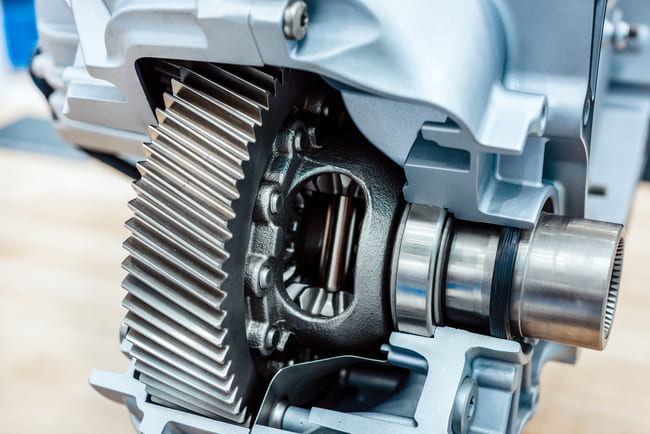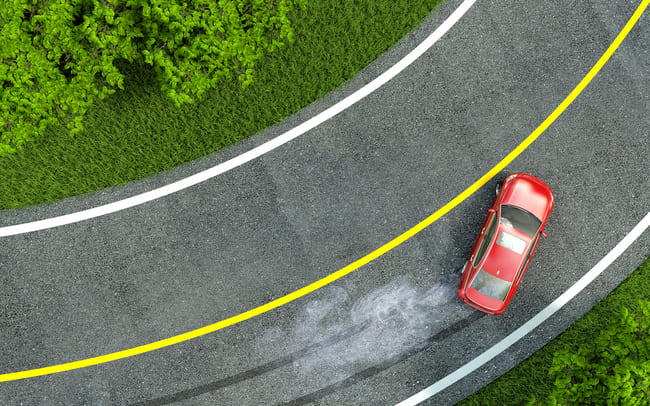
Modern vehicles have at least one differential and possibly also a differential lock. Most passenger cars have a single engine (this may differ for electric vehicles), the torque of which must be distributed to the individual wheels and, in the case of 4WD vehicles, also to the respective axles. When driving straight ahead, the wheels rotate at the same speed and the engine torque is also distributed evenly. However, things are different when cornering, because here the individual vehicle wheels describe different lanes, so that they have to turn at different speeds. Your differential ensures that this also works smoothly. A differential lock is in turn particularly necessary when driving off-road or driving over poor road surfaces. We explain the definition of a differential lock and the function of a differential lock in your car in the following article.
Contents
How does an open differential actually work?
To understand how a differential lock works, you must first understand how your vehicle's differential works. A so-called open differential is often found here. This allows your vehicle to have different speeds on the individual wheels, but the engine torque cannot be distributed arbitrarily. The actual torque is created by the braking of the wheels by the ground if the wheel in question has sufficient traction. With an open differential, the engine torque is distributed evenly to all driven wheels. Say 50% to the left and 50% to the right drive wheel for a non-4WD vehicle and 25% to all wheels of the car for 4WD vehicles. Accordingly, the maximum torque that can be built up is always limited by the driven wheel that has the worst grip. Since off-road it can easily happen that a vehicle wheel no longer has any traction at all, in this case the drive torque of all wheels would tend towards zero with an open differential. This in turn means that you would no longer be able to move forward with your vehicle. If your car does not have an appropriate system to remedy the situation, you can sometimes retrofit a differential lock in your car.
What is a differential lock?

Now that you know what problems an open differential can cause, let's look at the definition of a differential lock. The weaknesses of a differential or an open differential can be remedied by installing a special locking differential. Because a locked diff allows you to move forward with your car even if one of the wheels has no or only insufficient traction. A locking differential, which is particularly efficient, is also referred to as a 100% differential lock. This is also particularly easy to set up and available for a low price. If you are interested in retrofitting a differential lock, you should take a closer look at such a system in order to keep the costs as low as possible.
What does one mean under a limited slip differential?
In most cases, you will find the locking differential described on real off-road vehicles. Depending on the actual vehicle type and customer requirements, one or more locking differentials are installed. In the maximum configuration, as can be found on the Mercedes G, for example, three locking differentials are fitted: one between the wheels on the front axle, one between the wheels on the rear axle and one between the rear and front axles. This way you are always on the safe side, always making good progress. Other vehicle models, on the other hand, only have a limited-slip differential mounted between the two axles. These include, for example, the Lada Niva or the Land Rover Defender. If you can switch on the all-wheel drive in your car if you wish, you should note that this switch-on corresponds to driving with a locked center differential. For this reason, the four-wheel drive may only be switched on in these cars when driving off-road. If all wheels have good to very good grip, serious damage would otherwise occur.
What other types of differential locks are there?

We have already dealt with the locking differential in detail, but there are a number of other variants of differential locks, which can not only be used off-road, but also have their place in everyday life. This also includes a so-called sport diff, which is enjoying increasing popularity.
The latter type of differential lock is in most cases the most modern of all variants: an electronically controlled differential lock. This uses all available sensor data from your vehicle to intervene to regulate, for example, if your vehicle is threatened with lateral acceleration. Due to the electronic control system, this type is particularly flexible and also very effective.
With a torque-controlled limited-slip differential, the driven wheel that has more traction (i.e. less slip) is supplied with the corresponding multiple of the torque of the other driven wheel with more slip (less traction). The so-called speed-controlled differential lock is comparable to this, only that it makes use of the different wheel speeds. Here the system uses the individual wheel speeds to determine how much traction the individual wheels enjoy and adjusts the torque distribution accordingly.
In the case of a differential lock with a so-called fixed value lock, it is precisely determined in advance when the existing differential should be locked. One parameter could be the actual position of your car, for example. This can be used off-road, for example, to supply the individual sides of the vehicle with different torques, because when the vehicle is inclined horizontally, an uneven distribution of the actual loads can be assumed.
Conclusion
A differential lock is particularly necessary when driving off-road. This is especially true if you are using a four-wheel drive vehicle, as that is when the likelihood of a single wheel losing traction is greatest. If you want to retrofit a sports diff, it is also advisable to think about an electronically controlled differential lock. In this way you can get the maximum performance out of the system.
A tip from CarTipsandmore: The symbol for your differential lock can differ depending on the vehicle manufacturer, type, year and variant. We therefore recommend that you consult your technical vehicle manual for more information. However, it is often one with an „x“ Crossed-out circle on a vehicle axle which is connected to two wheels.
